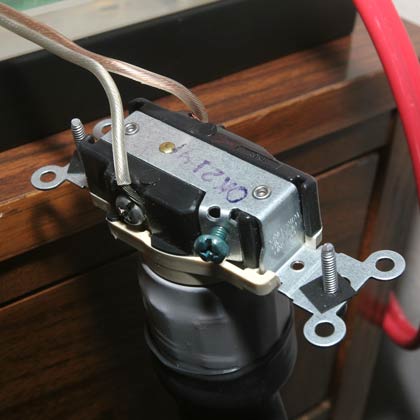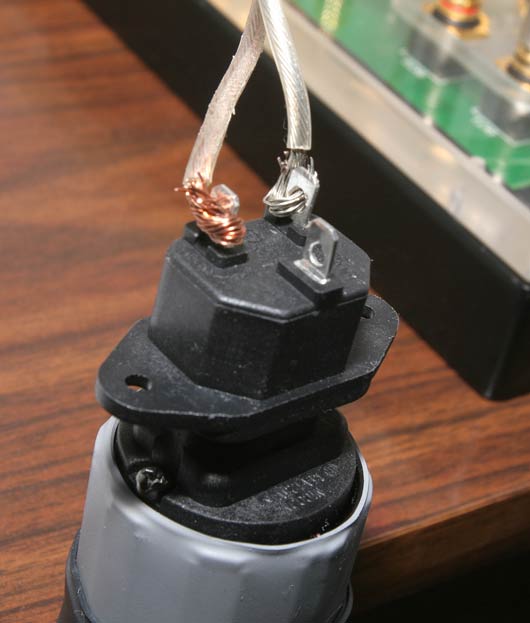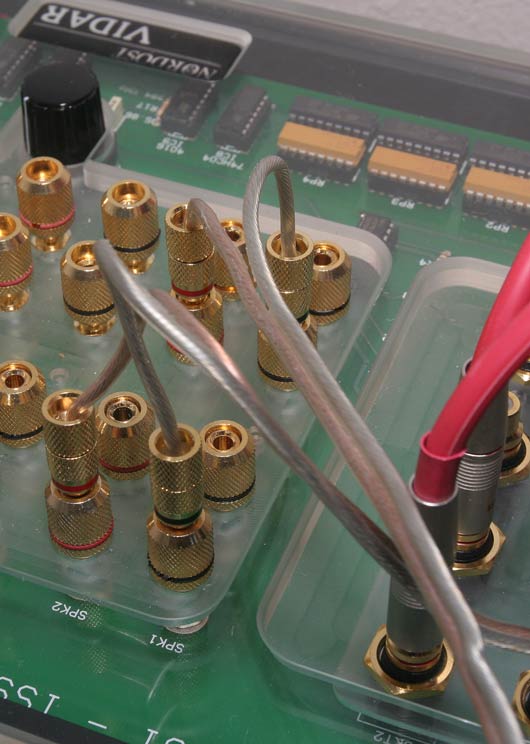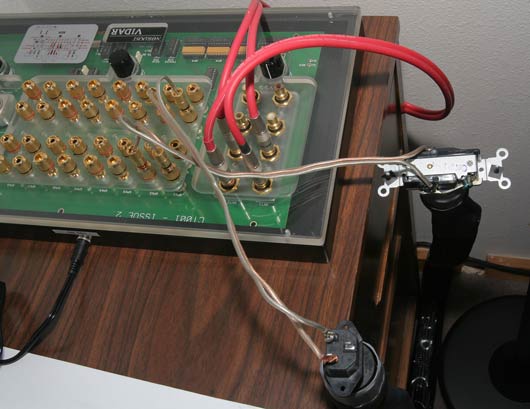As people may (or may not, it has been awhile) remember – we have been trying to determine how effectatious, sonically, it is to burn in the ElRod power cords on the Nordost ViDar cable burn-in device.
The short and sweet is… not that much.
We tried this on the low-power ELROD EPS-2 Signature power cables. One was on the ViDar for 2 weeks or so. One wasn’t. For this test we put both in the system for two weeks and then compared them – trying them both on the Emm Labs CDSA player and both on the Audio Note CDT3 transport.
Neli heard no difference and I thought the un-vidar’ed power cord might have a wee little better separation and emotion… in both tests … but un-ViDar’ed cord was always tried after the other cord and maybe I was just settling into the song a little better? Perhaps. In any case, the differences are so subtle, compared to what we usually talk about on this blog, as to be insignificant.
Anyway, the conclusions we reached was that the ViDar, designed for low power interconnects and cables, on which the ViDar kicks tush – does not seem to have much effect on correspondingly high current power cords. At least not these cords on these components.
In fact, the taking off of the power cord, and letting its internal capacitors discharge for about 30 seconds during our swap in and outs during this test (as we rushed one upstairs and the other downstairs to quickly put them on the other system during this test – trying to keep them charged up] might have had more effect on the sound. Hard to tell.
So that is our next test for the ELRODs – charged versus un-charged. It takes about 3 – 7 days for the power cord’s capacitance to fully charge, so we will compare one that has been in the system for awhile versus one that has not. A test that does not allow us to go back and forth – i.e. to repeat the test except once every seven days. And it requires us to have a power cord just sitting around doing nothing – not something that we can afford here these days with all four systems fully operational.
But I guess we are doing it anyway.

The power cord with the ‘V’ tag Neli put on it to designated its ViDar’ed status. Otherwise things might get a wee bit confusing… now WHICH cord was that again?

The EPS-2 Signatures are about 1/2 the size of the high-powered ELRODs.

The cord on the back of the EMMLabs CDSA.

The Audio Note CDT-Three transport. It is not hooked up because…

… several of our HRS M3 Isolation Bases and Neli were out on audition during this photo shoot. So the HRS SXR and MXR racks were looking like Macy’s the day after Christmas [OK, yes, so I have been watching a lot of old movies lately].





